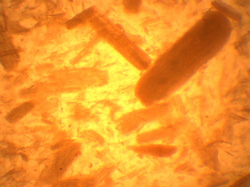Imaging tools for micromechanical fibres
It is of major importance to the food packaging industry that studies are undertaken into the performance of new technologies. One such study investigated the micromechanical structure in short natural fibre composites and the means by which they can be best validated. However, a case in point, in order to monitor and test material performance, suitable quantification methods have to be developed. The BIOCOMPAC project investigated several methods for quantification but many failed because of the limited length of the fibres and also because of the variance between fibre strength and matrix strength. Image analysis techniques such as Ion Scattering Spectrometry (ISS) or Secondary Ion Mass Spectrometry (SIMS) are helpful in determining surface characteristics of fibre orientation. It is known that the orientation of fibres as well as the presence of agglomerates affects the tensile tests. Therefore, it was necessary to develop methodologies that could serve as quality control tools. It was concluded that the development of imaging tools would result in a highly effective analysis tool, one that could be used for natural fibre composites.







